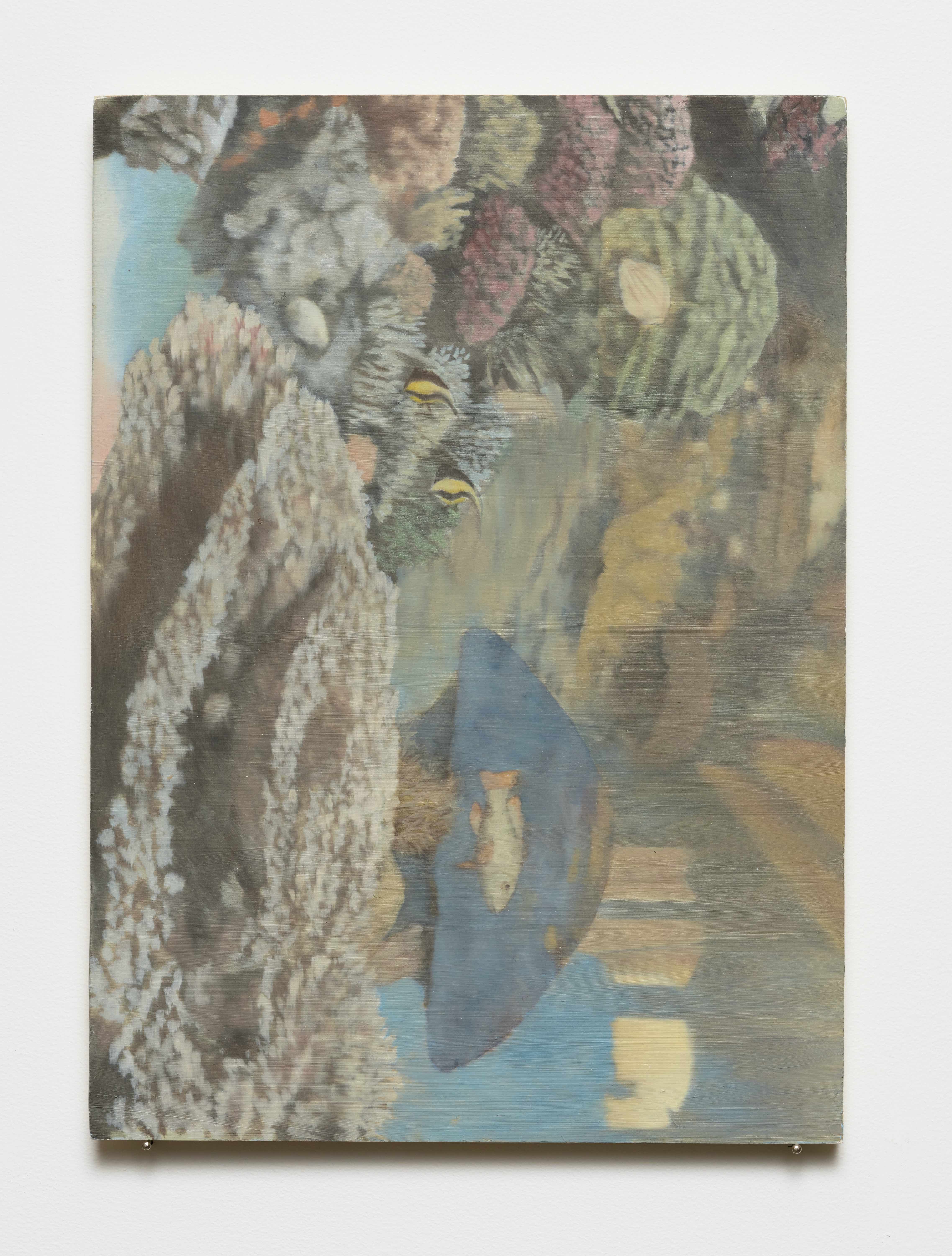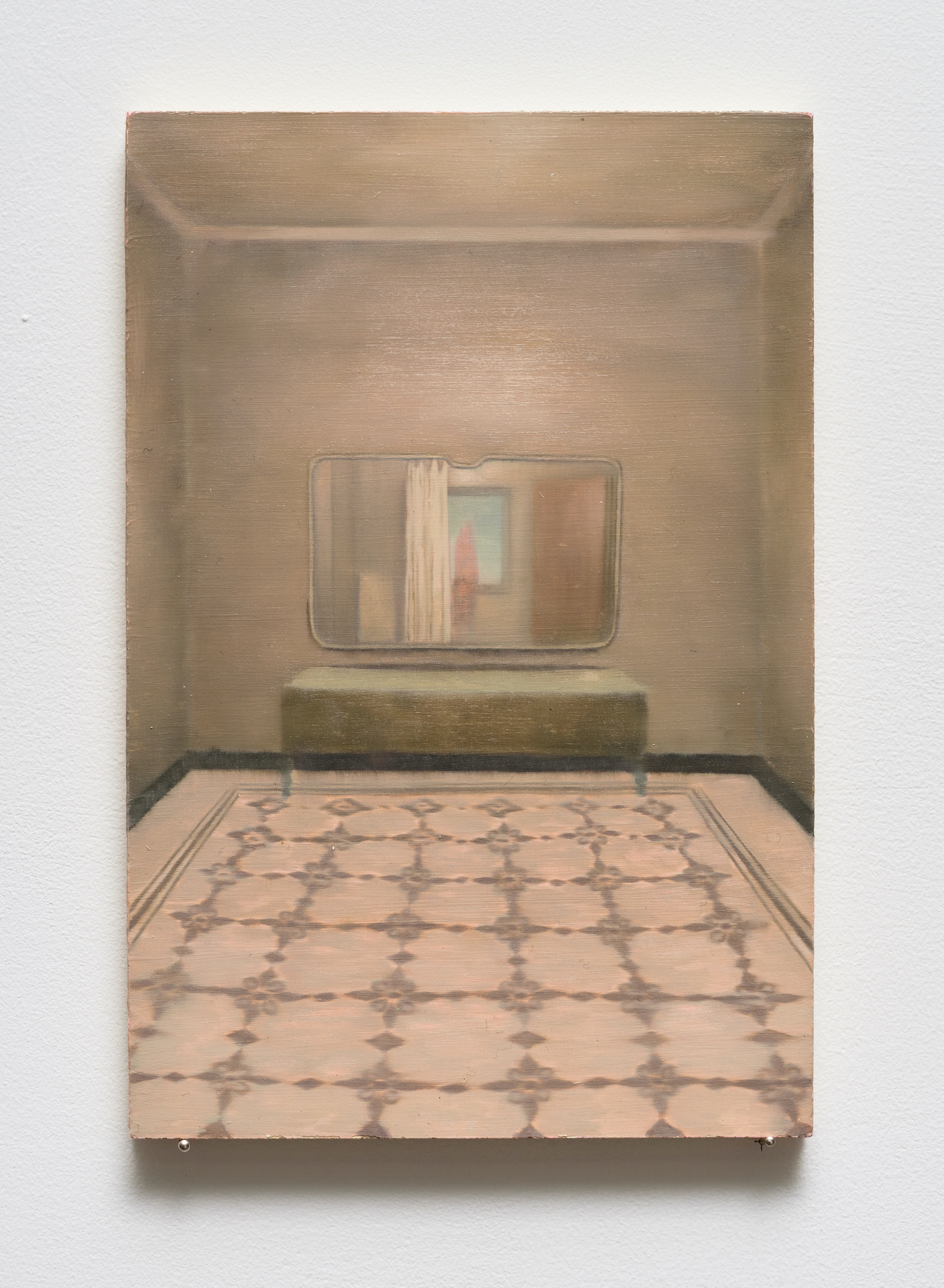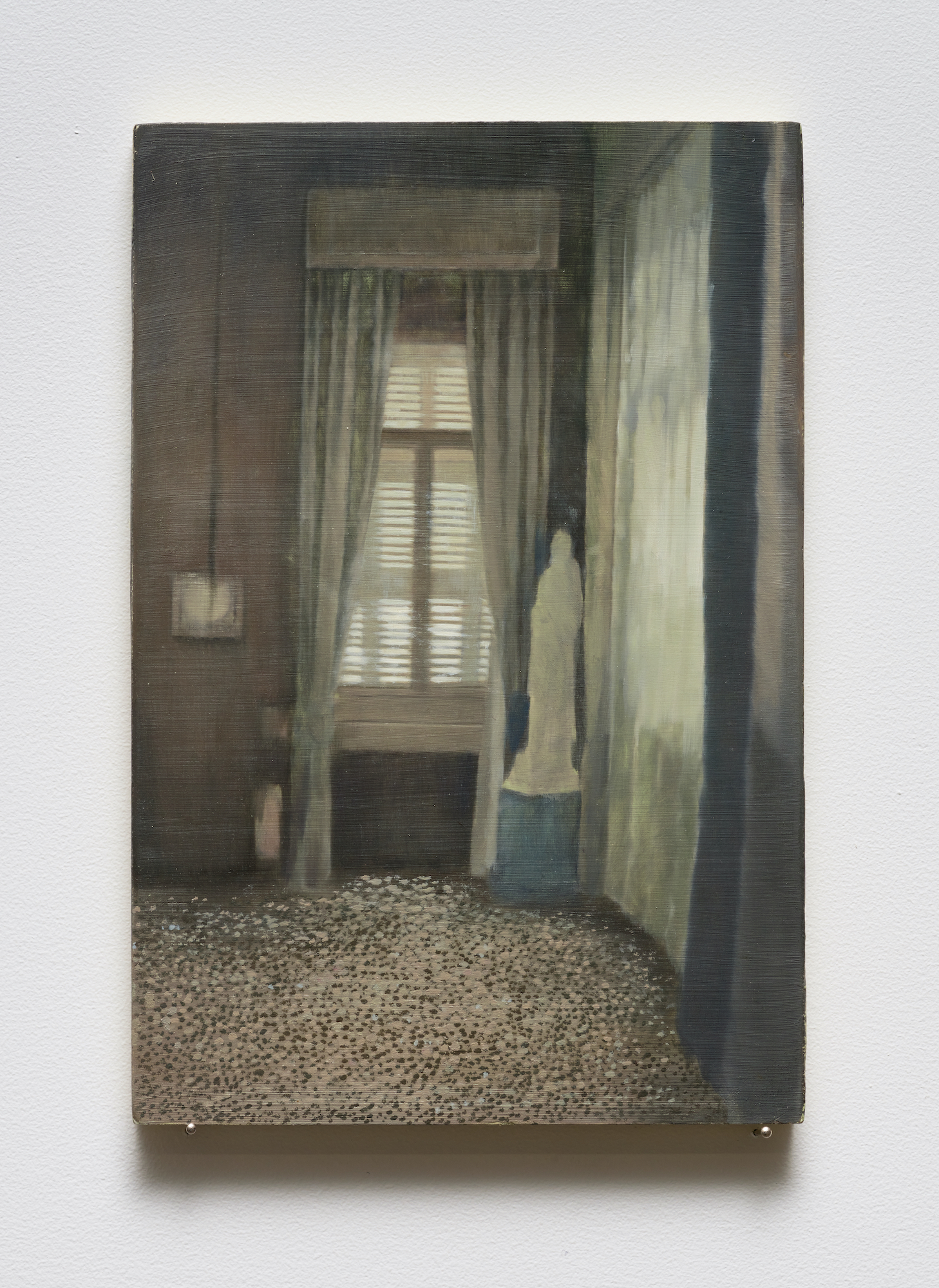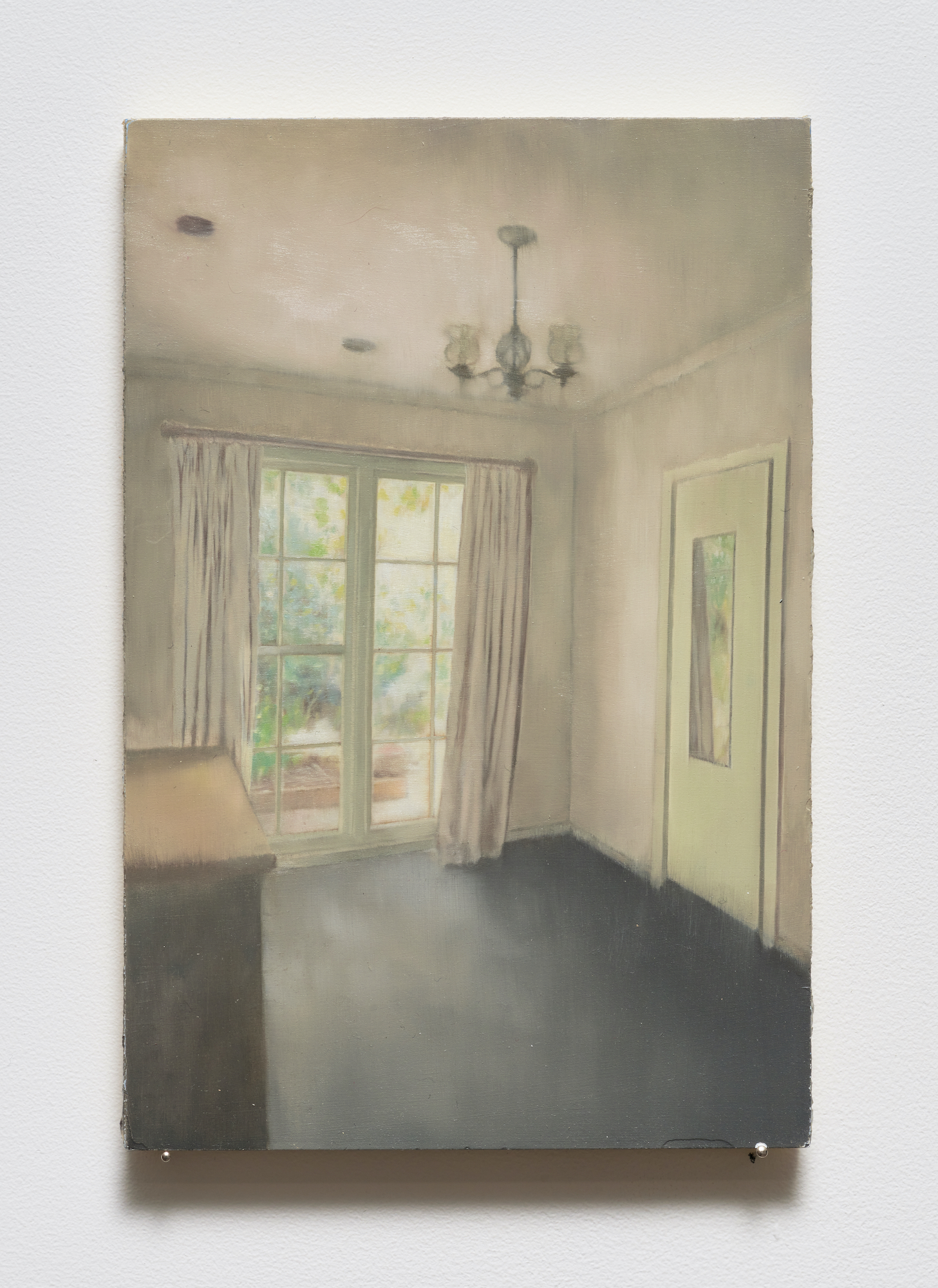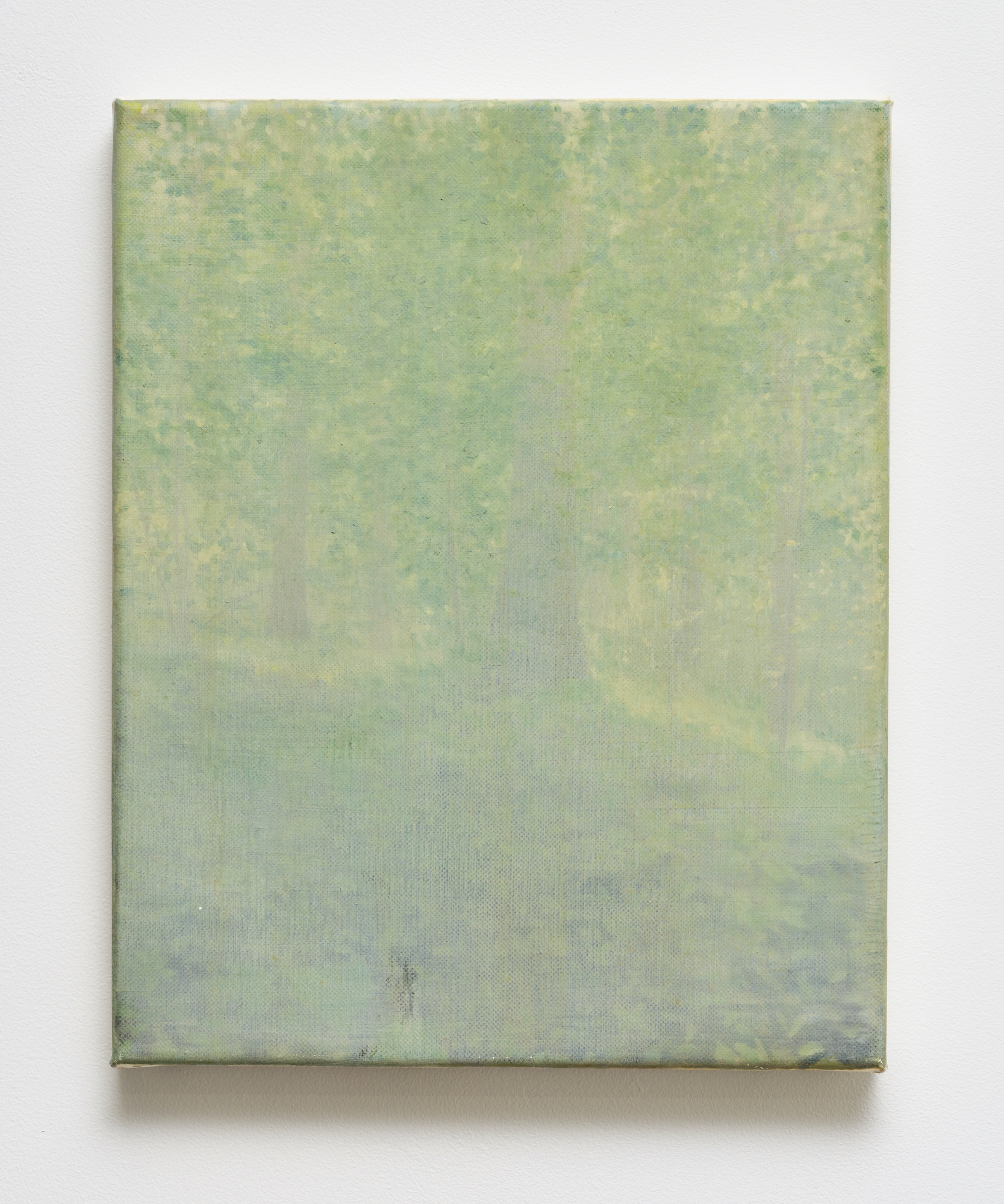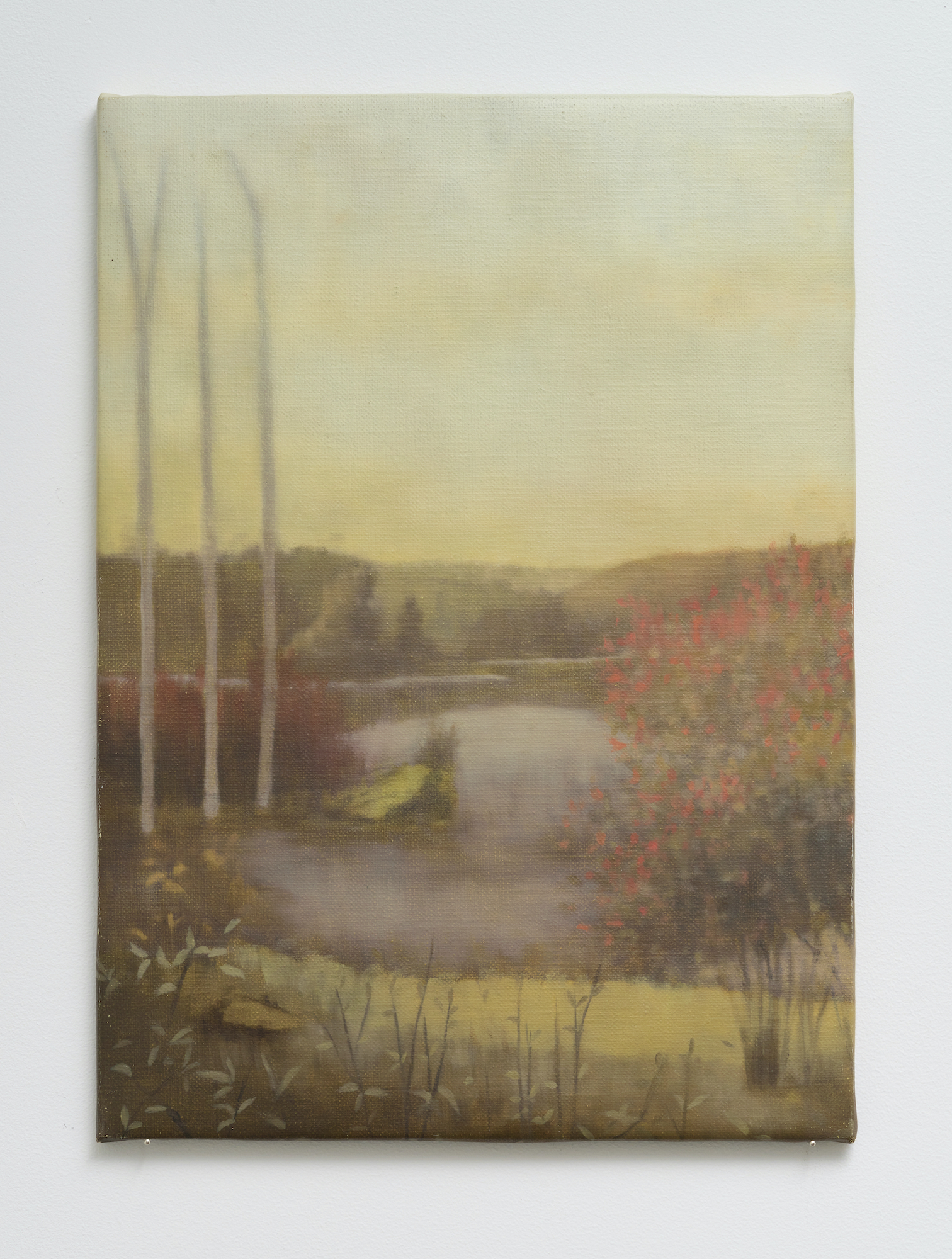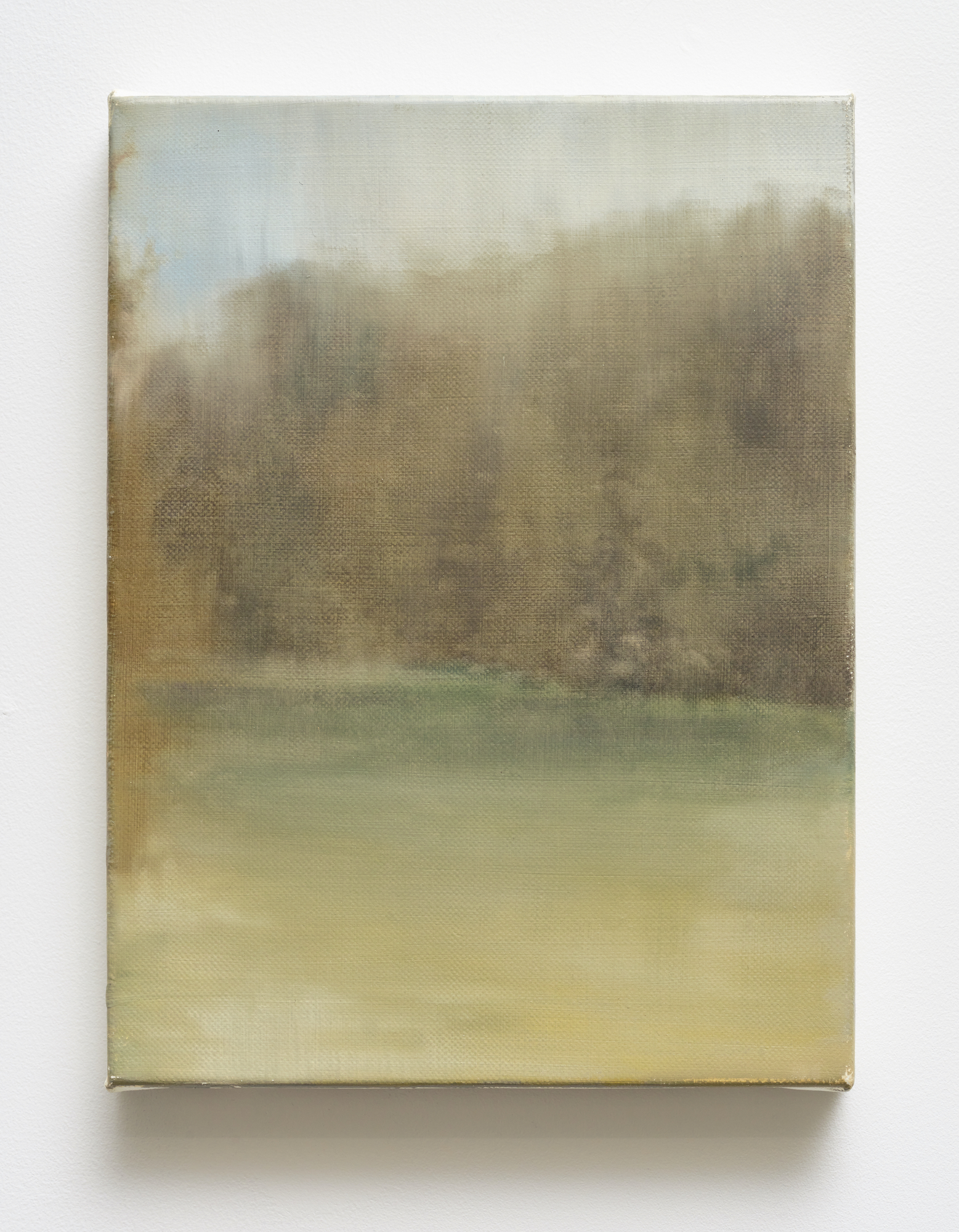
February 2 – April 1, 2023
Kate Wallace
Exhibiting 11 small-scaled paintings, each reflecting ideas of memory, intimacy and space, the distant past, and isolation. The intimate scale of the work reflects on how memory changes overtime.
Depicting spaces of refuge, the paintings hold particular resonance in the protective and nurturing qualities of home. Techniques such as repetition, scale, blur, montage, and detail (or lack thereof) are employed to record and translate the artist’s experience of place, in turn reflecting upon the precariousness of remembrance during times of such ecological upheaval and change. Moreover, the delicate nature of memory and how we recall places that have a sense of stillness echoing throughout.
In Gaston Bachelard’s “The Poetics of Space,” namely the chapter titled “Corners,” Wallace examines scenes of comfort and familiarity that corners can provide in which we experience and occupy its warmth through poetic means, as alluded to by Bachlard.
“For it is a poetic fact that a dreamer can write of a curve that it is warm. But does anyone think that Bergson did not exceed meaning when he attributed grace to curves and, no doubt, inflexibility to straight lines? Why is it worse for us to say that an angle is cold and a curve warm? That the curve welcomes us and the over sharp angle rejects us? That the angle is masculine and the curve feminine? A modicum of quality changes everything. The grace of a curve is an invitation to remain. We cannot break away from it without hoping to return. For the beloved curve has nest-like powers; it incites us to possession, it is a curved “corner,” inhabited geometry.” (P.165)
Within the text, there is a reference to angular corners (masculine) vs. curved corners (feminine) given the gallery a space holder for the work contains curvilinear walls; this didactic takes on an animate meaning. The paintings are wrapped the warmth of the gallery’s curvilinear walls with a longing for something past, a desire to return to a world lost, a need for the familiar; these ideas in many ways relate to Bachelard’s analysis of one’s home as a child, acting as a memory to return to when in search of comfort.
In Wallace’s A curve that warms (2023), the painting softly depicts a scene observed from across a the curve that warms Kate Wallace February 2–April 1, 2023 lake. The subdued colour palette coupled with the spareness of the scene itself considers the fragility of that which surrounds us. An echo of place, a record of somewhere seen from a distance. A curve that warms offers a moment of pause and a gateway to escape or dream amidst the milieu of our daily lives.
Wallace’s scenes of space, be it in a home or in outdoor places, sourced from photographs taken with an iphone during walks or in private interior spaces, encapsulating views of places she has lived or passed through. Furthermore, Between things (2023) and Through Leaves #1 (2023) derived from pictures taken in Prospect Park. Wallace applies an assembly of pale greens or yellows through a thin veil of paint to conceal or illustrate the integrity of memory.
In Standing in a room (2023), the space is empty. At least, it was upon initial entry. As the viewer’s eyes adjust, a figure appears standing by the window. Drawing closer, the figure turns to marble as we realize it is nothing more but a relic from a distant past. Enclosed in darkness, this painting refers to the protective qualities or features of a home, providing a place to shelter in and hide from the outside world.
Similarly, A mirror on a wall (2023), despite the few objects that reside within - a table, a mirror, a tiled floor- a sense of ambiguity exists throughout. Viewers are taken to an entry to another room, a portal to a place distant and unknown, or merely a reflection of one’s self.
Kate Wallace (b. 1990, Melbourne, AU) looks to record and translate her own experience of place and urban living through the dialogue of representational painting. Using techniques such as scale, cropping, blur, repetition, montage and detail, her works are concerned with the translation of memory and construction of past through painting. Informed by photographs taken in wait or transit, Wallace considers our shared view of the world as an intimate counterpoint to the fast and constant experience of today. Kate completed a Master of Contemporary Art at the Victorian College of the Arts, University of Melbourne in 2018, receiving the Wingate Student Fellowship Art Prize. Kate has exhibited across galleries in Melbourne and is a recent recipient of a Career Development Grant from the Australia Council for the Arts.
PRESS RELEASE / WORKS LIST
WORKS
